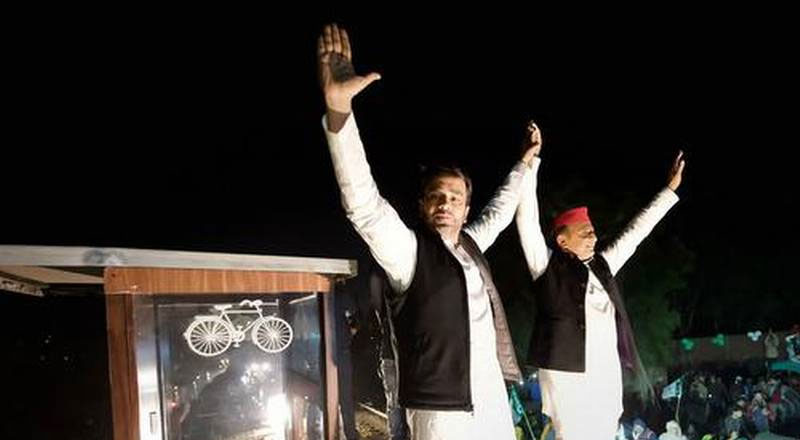The high stakes electoral battle in Uttar Pradesh will commence with voting on February 10 for 58 seats in the western belt of the State where the BJP’s dominance since 2014 faces a challenge from a resurgent alliance of the SP and RLD. Over 2.28 crore voters will decide the fate of 623 candidates, including 73 women.
The first phase of the Assembly election in the rich sugarcane and potato belts as well as the industrial regions close to Delhi, will test the chemistry of the RLD-SP alliance, the grit of the BJP’s incumbent ‘double engine’ government and most importantly, the impact of the farmers protest.
The group leading the farmers’ protest has appealed to voters to throw out the BJP government.
In terms of individuals, the first phase will also reveal the popularity of BSP chief Mayawati but more significantly it will be the appraisal of RLD chief Chaudhary Jayant Singh, who is banking on the support of the agrarian castes especially on the unity of the Jat and Muslim communities.
This election will also to a large extent be a commentary on the future of Mr. Singh, who himself lost his seat in the 2019 Lok Sabha election despite having support from the SP and BSP. The RLD won only one seat in 2017. The legislator later joined the BJP.
The U.P. Assembly has 403 seats and in the last three elections, the BJP has managed a near sweep of the region — first riding on the communal polarization following the 2013 Muzaffarnagar riots, then the anti-SP sentiment in 2017 and finally the charm of Prime Minister Narendra Modi and the BJP’s caste-communal calculus of uniting the upper castes, non-Yadav OBCs and the non-Jatav Dalits in 2019.
In 2017, the saffron party secured 53 out of the 58 seats which go to the polls on February 10. These constituencies are located in the Jat-dominated districts of Muzaffarnagar, Meerut, Baghpat, Shamli, Mathura and others. Voting will also take place in Aligarh, Ghaziabad, Gautam Buddha Nagar, Hapur, Agra and Bulandshahr.
The Akhilesh Yadav and Jayant Singh campaign banks on the transfer of votes between their core constituencies, especially Jats and Muslims.
The alliance also hopes to leverage the agrarian discontent in the region especially among the sugarcane farmers who have been expressing anger over delay in payment of dues and rising electricity bills.
Though the BJP tried to appease the cane farmers by increasing the purchase price and other measures, its high-octane campaign was filled with communally-loaded issues and rhetoric. The BJP not only evoked the memories of the Muzaffarnagar riots, which changed the political demography in the area leading to the dismantling of the RLD’s vote base,
Union Home Minister Amit Shah himself repeatedly focused on the alleged exodus of Hindu families from Kairana in Shamli through a strident door-to-door campaign.
For many, it will be a battle between identity and economic issues, as well as the contest for the acceptability as CM face between the incumbent Yogi Adityanath and the main challenger Akhilesh Yadav. Despite the BSP’s falling fortunes, the loyal vote bank of Ms. Mayawati and her tactical candidate selection would mean that the party would still be a factor in the election.
With the BSP fielding many Muslims in the region, the SP-RLD alliance also faces the task of preventing the division of the all crucial minority votes, while the BSP hopes to add the Muslim votes to its core Jatav base.
Among the district going to the polls is Agra, which has a substantial population of Dalits. In the 2017 election, the BSP had stood second on all nine seats while the BJP won all.





